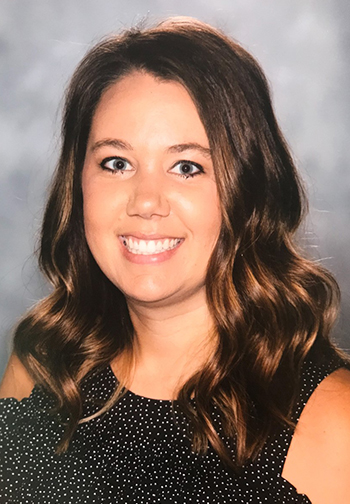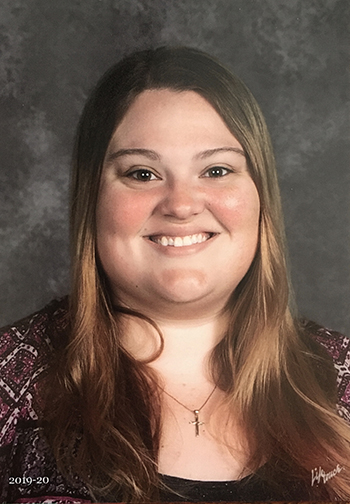Volume X: 2020
Cheryl Frerichs
Using the Peabody Picture Vocabulary Test IV: Data-Driven Vocabulary Instruction in the Kindergarten Classroom
 Abstract
Abstract
The purpose of this study was to investigate the use of the Peabody Picture Vocabulary Test IV (PPVT-4) in order to determine the instructional needs, increase word knowledge, and measure vocabulary gains for kindergarten students. Vocabulary development is critical to the success of young readers, and teachers must be prepared to meet the vocabulary needs of their students in order to help them develop good reading skills. Two research questions guided this study: To what extent can data from the Peabody Picture Vocabulary Test affect vocabulary instruction in kindergarten? And Using data from the PPVT-4, what strategies are beneficial for promoting vocabulary development in the kindergarten classroom? The researcher hypothesized that the Peabody Picture Vocabulary Test would provide data to inform about students’ current vocabulary development. The researcher also hypothesized that using this data, along with research-based strategies of vocabulary instruction would support increased word knowledge and assessment outcomes in kindergarten. Eight students from the researcher’s kindergarten class participated in the six-week study. All participants were assessed using the Peabody Picture Vocabulary Test IV as an overall pre- and post-test, along with weekly vocabulary focus word pre- and post-tests. All participants received the same vocabulary instruction using research-based strategies. Participant scores on weekly vocabulary post-tests increased by 40% from weekly pretests. Scores on the PPVT-4 increased by 7.49%, and participant age-equivalent vocabulary increased by an average of 8 months after six-weeks of intervention.
About Cheryl
My college education started at Eastern Illinois University in 1993, where I attended as an Elementary Education major for two years before starting a family. I took a job as a classroom aide in 1996, and continued to work as an aide in kindergarten, and later pre-k for 18 years. In 2011, I made the decision to complete my degree in Early Childhood Education while continuing to work in the classroom. I earned my Bachelor’s Degree from Southern Illinois University at Edwardsville in 2014, and started teaching at Litchfield Pre-K the same year. I returned to EIU in the Spring of 2018 to pursue my Master’s Degree in Curriculum and Instruction with a focus on Reading Instruction. In 2019, I had the opportunity to begin teaching kindergarten at the same school I attended as a kindergartener. I graduated from EIU with my Master’s Degree in the fall of 2020.
This marks my 25th year of working with early childhood students in the Litchfield School District. My formal education allowed me to learn with and from many other educators, and my 18 years as a classroom aide provided some of the best training imaginable from several amazing teachers. I am passionate about helping children develop a love of reading, and feel that I have found my calling in the early childhood classroom.
The graduate program at Eastern Illinois University has helped to broaden my mindset through purposeful collaboration with other professionals. The program also led me to understand the significance of educational research. Most importantly, this experience has helped to improve my teaching practices for the benefit of my students.
Lacey Wright
The Effectiveness of Repeated Reading Practice on Fifth Grade DIBELS 8th Edition Progress Monitoring Oral Reading Fluency (ORF) Scores
 Abstract
Abstract
The purpose of this study was to determine if using repeated reading as an intervention is effective at increasing participants’ oral reading fluency scores when measured using the DIBELS 8th Edition Oral Reading Fluency (ORF) progress monitoring passages. The researcher also wanted to determine how effective the repeated reading intervention was in increasing participants’ oral reading fluency scores. It was hypothesized that the participants in the repeated reading instructional intervention group would increase their DIBELS ORF scores and would do so at a greater percentage rate than when compared to participants’ scores when not participating in the intervention. Two research questions guided this study: Is participation in repeated reading practice effective at increasing DIBELS ORF scores? and to what extent is repeated reading an effective practice for increasing DIBELS ORF scores? Twenty-one students, ages 10 and 11, from a single fifth-grade classroom participated in the study for six weeks. During Phase I, all participants received regular reading instruction from the general education classroom, and a repeated reading intervention session was implemented by the researcher during Phase II. Of the 21 participants, 19 had increased DIBELS ORF scores from the Phase I post-test to the Phase II post-test and this supports the researcher’s first research question and hypothesis. Only six participants had a significant percent change while 15 participants did not have a significant percent change, which does not support a significant extent of effectiveness between repeated reading and increasing DIBELS ORF as addressed in the second research question and hypothesis.
About Lacey
Mrs. Lacey Wright began teaching in 2005 after graduating with her Bachelor's degree from Eastern Illinois University in Charleston, Illinois. She obtained her Masters in Educational Administration from Southern Illinois University - Carbondale in 2011 and her Masters in Curriculum and Instruction from Eastern Illinois University in 2020. She has worked as an elementary teacher and a Reading Teacher in a Title 1 school in rural Southern Illinois.
Randi Yager
Digital versus Traditional Methods of Teaching Mathematics: What Works Best for Second-Grade Students
 Abstract
Abstract
Many students enter second grade lacking automaticity with basic subtraction math facts. This action research will examine which method of practicing subtraction math facts works best. Eighteen individuals participated in this study. During phase one of the study participants practiced their subtraction math facts in traditional ways. These ways included flash cards, wrap ups, and a card game. During phase two of the study participants practiced subtraction facts digitally by using online gaming sites such as Xtra Math, Freckle, Splash Learn Games, and a website called Education Games. During both phases, participants practiced math facts for fifteen minutes, three days a week. Each phase lasted three weeks. At the end of each week participants were assessed using weekly subtraction fact tests. The weekly tests were composed of varying subtraction problems each week. Week one was simple subtraction facts with digits 1-18. Week two was 2-digit subtraction facts with no regrouping. Week three was 2-digit subtraction facts with some regrouping. A pretest was also given at the beginning of each phase. The results showed that when comparing phase one, week one test to phase two, week one test, participants improved in the number of problems correctly answered during phase two of the study. Participants improved their automaticity with subtraction facts during each week of phase two compared to phase one. Overall, participant scores improved during the three weeks of practicing their facts using technology. (View Full Manuscript)
Sarah Jones
The Effect of Classroom Discipline and Attendance on Middle School Math Academic Achievement
 Abstract
Abstract
The purpose of the study is to determine if math academic achievement has a relationship with the amount or duration of discipline removal and attendance. Another purpose is to better improve classroom discipline procedures as a result of this study to create a better learning environment. To improve academic success the intent is to look for a pattern within the discipline practices and academic achievement. A quantitative approach with a quasiexperimental design was employed for this study. The researcher collected data for a total of six weeks from eighth grade participants during the fall semester of 2019. The participants in this study were 117 eighth-grade students aged 12-15. The instruments being utilized included skyward, and the schools established APR (alternate placement room) list. Data from Skyward and Alternative Placement Room (APR) was analyzed descriptively. Results revealed that there is not a direct relation between math academic achievement and discipline or attendance, although 44.44% of the time absences lead to grade decreases. When it comes to discipline 50% of students had a lower improved score than the average for the pretest on the chapters covered in the study, while 36% had overall grade decreases. (View Full Manuscript)
Brittany Meyer
Implementing Response to Intervention in Mathematics in a Fifth Grade Mathematics Classroom
 Abstract
Abstract
The purpose of this study was to determine if integrating technology within interventions would increase the level of understanding of student’s mathematical knowledge. The researcher intends to discover if low and high technology strategies would impact student’s engagement, participation, and effort towards their mathematical learning. It was hypothesized that students would positively benefit from the use of low and high technology interventions. The researcher suggested that the use of these interventions would improve the students’ ability to understand and better retain mathematical concepts. The two research questions that guided this study: Does implementing high and low technology interventions improve the understanding of mathematical concepts for struggling fifth grade math students? And what are specific strategies that best facilitate students’ learning when a deficit is identified in a current mathematical learning concept? Two classes consisted of a total of twenty-six fifth grade students, ages 10-11, participated in this six week study. Class I, eleven students, endured math interventions with the use of technology resources. Class II, fifteen students, consisted of students receiving interventions using only basic math supplemental worksheets. All participants improved their scores, however Class I increased their post-test scores by 12% more. Class I’s mean post-test score was 97% and Class II’s mean post-test score was 85%. Consistently on all subgroups, Class I had more gains and higher scores than Class II. Class I’s increased score was 52% and Class II’s was 48%. This concludes Class I making more improvements than Class II. (View Full Manuscript)